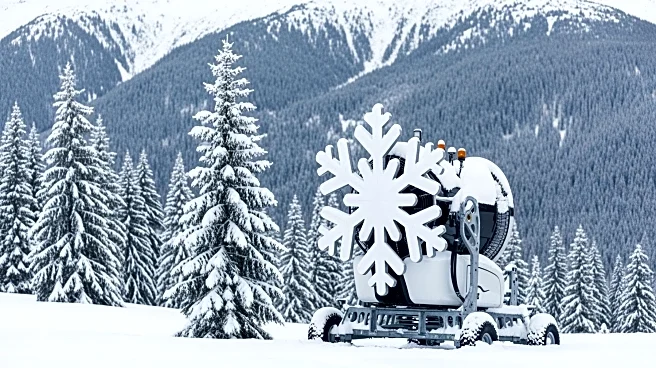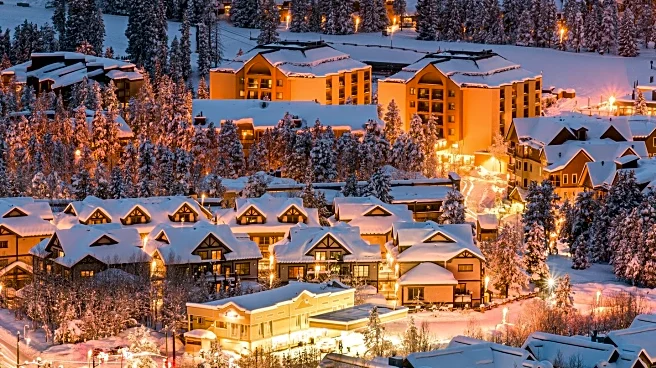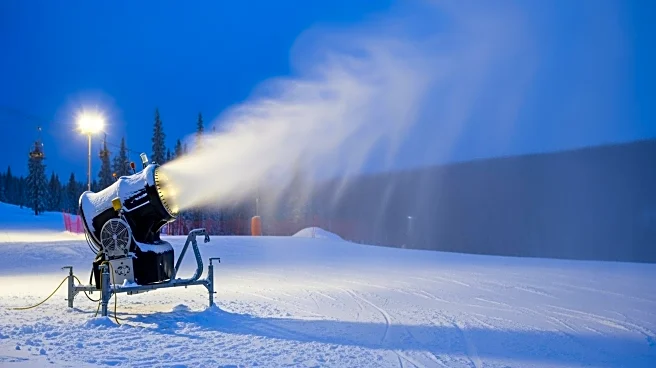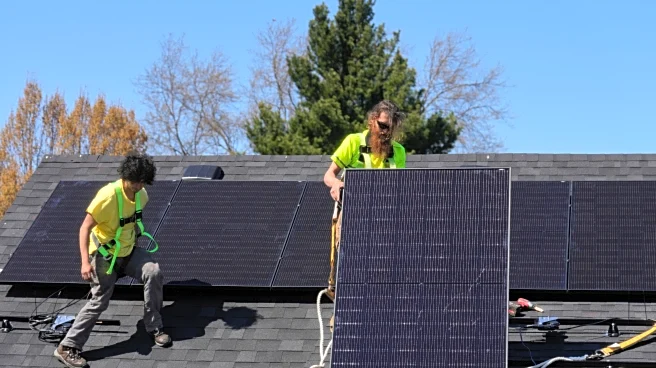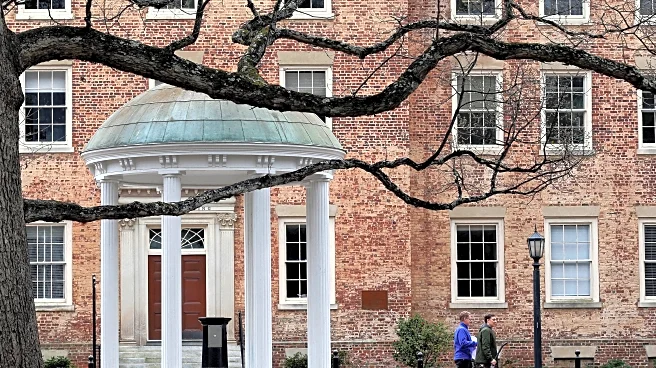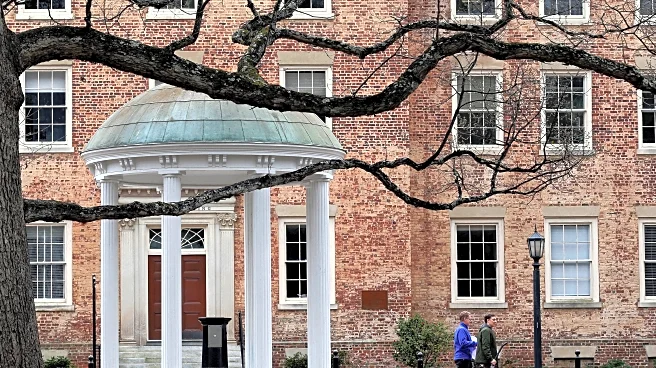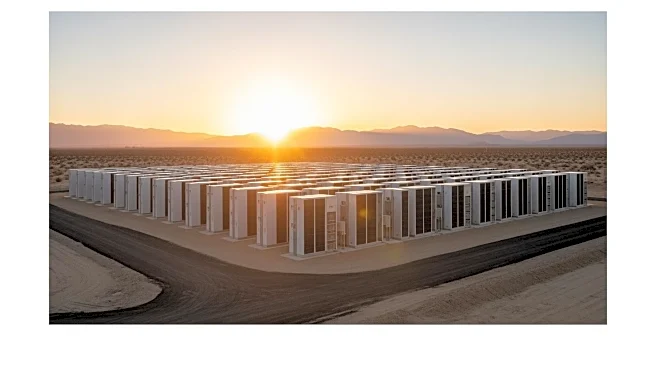What's Happening?
Ski resorts across the U.S. are gearing up for the winter season by employing snowmaking technology to ensure slopes are ready for opening. Arapahoe Basin Ski Area in Colorado has started snowmaking operations,
aiming to open by the end of October. The process involves converting moisture from the air into snowflakes, with optimal conditions being cold, dry days. The resort plans to begin round-the-clock snowmaking soon, aligning with typical opening timelines. Last year, Wolf Creek Ski Area opened first on October 22, followed by Keystone and Loveland in early November.
Why It's Important?
The use of snowmaking technology is crucial for ski resorts to maintain operations amid changing climate conditions. It allows resorts to open on schedule, providing economic benefits to local communities reliant on winter tourism. The technology also ensures consistent snow coverage, enhancing the skiing experience and attracting visitors. As climate change impacts snowfall patterns, resorts increasingly depend on artificial snow to sustain their business, highlighting the intersection of environmental challenges and economic interests in the ski industry.
What's Next?
With colder temperatures forecasted, Arapahoe Basin and other resorts are expected to continue snowmaking efforts to meet opening dates. The reliance on snowmaking may increase as climate change affects natural snowfall, prompting resorts to invest in more efficient and sustainable technologies. Stakeholders, including local businesses and environmental groups, may engage in discussions on balancing economic needs with environmental impacts, potentially influencing future policies and practices in the ski industry.
